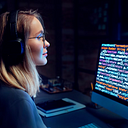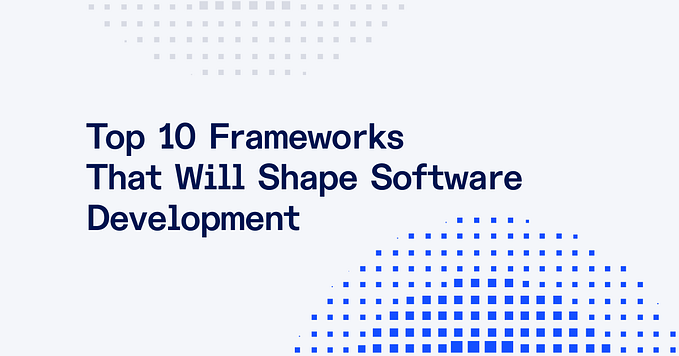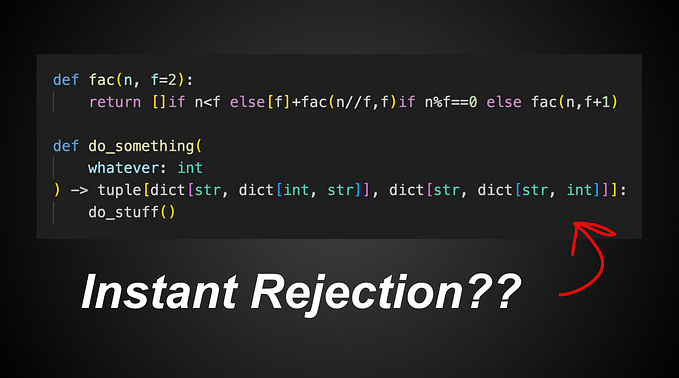Exploring Popular Python Frameworks: A Guide for Developers

Python is known for its simplicity and versatility, making it one of the most popular programming languages in the world. From web development to data science, Python’s frameworks streamline the development process, allowing developers to focus on building high-quality, scalable applications. In this blog, we will dive into some of the most popular Python frameworks, exploring their features and use cases.
What is a Python Framework?
A Python framework is a collection of libraries and modules that provide a structure for building applications. Frameworks abstract the complexity of low-level tasks, enabling developers to focus on application logic rather than dealing with the nitty-gritty details. Python frameworks can be broadly classified into three categories:
- Full-stack frameworks — Provide a complete solution for web application development.
- Micro-frameworks — Offer minimal functionality, allowing developers to customize the framework as per their needs.
- Asynchronous frameworks — Designed to handle asynchronous programming efficiently, ideal for applications with high concurrency.
Now, let’s explore some of the most popular Python frameworks.
1. Django: The Full-Stack Powerhouse
Django is a high-level, full-stack framework designed for building robust web applications quickly. It follows the DRY (Don’t Repeat Yourself) principle, promoting code reusability. Django comes with an ORM (Object-Relational Mapping) system, admin interface, authentication, and more, all out-of-the-box.
Key Features:
- Batteries included: Django comes with built-in features like routing, authentication, session handling, and ORM.
- Security: It has robust security features like SQL injection protection, cross-site scripting (XSS) prevention, and clickjacking prevention.
- Scalability: Django is suitable for both small-scale applications and large-scale systems, such as Instagram and Pinterest.
- Admin Panel: The built-in admin panel allows developers to manage their application’s data effortlessly.
When to Use Django:
Django is perfect for large-scale web applications with complex business logic. If you need an all-in-one solution with rapid development and security, Django is the go-to framework.
2. Flask: The Minimalist Micro-Framework
Flask is a lightweight micro-framework that gives developers full control over how they build applications. Unlike Django, Flask doesn’t come with built-in components like an ORM or authentication system. Instead, it is designed to be flexible, allowing developers to choose the libraries and tools they need.
Key Features:
- Minimalistic: Flask provides the essential tools for building web applications, and developers can add features as needed.
- Modular: It has a modular design, allowing you to use extensions to integrate various features such as authentication, ORM, or form validation.
- Lightweight: Flask is lightweight and easy to get started with, making it ideal for small projects or microservices.
When to Use Flask:
Flask is a great choice for small to medium-sized applications or when you need to build microservices. It provides the flexibility to add only what you need, making it ideal for developers who prefer customization.
3. FastAPI: The Fast Asynchronous Framework
FastAPI is an asynchronous framework built for building modern, high-performance APIs with Python. It is designed for asynchronous web applications and comes with automatic documentation generation. FastAPI is one of the fastest Python web frameworks and is ideal for building APIs that require high concurrency.
Key Features:
- Asynchronous Support: FastAPI supports asynchronous code, allowing for high-performance applications, especially for I/O-bound operations.
- Automatic Documentation: FastAPI automatically generates OpenAPI and JSON Schema documentation, making it easy to share your API structure.
- Type Checking: It uses Python type hints to validate request parameters, making your API more robust and error-resistant.
- Performance: FastAPI is comparable to Node.js and Go in terms of speed, making it an excellent choice for building high-concurrency APIs.
When to Use FastAPI:
FastAPI is perfect for building modern APIs and applications that require high performance and asynchronous handling. If you’re developing a project where speed and concurrency are key, FastAPI should be at the top of your list.
4. Pyramid: The Flexible Framework
Pyramid is a flexible framework designed for both small and large applications. It is lightweight but allows you to scale your application as needed. Pyramid follows the “start small, finish big” philosophy, providing you with the flexibility to add only the components you need.
Key Features:
- Flexible: You can start with a basic setup and add more complexity as your project grows.
- Extensible: Pyramid supports many databases, templating engines, and security models, allowing you to choose the best tools for your project.
- URL Routing: Pyramid has an intuitive and powerful URL routing system, making it easy to map URLs to views.
When to Use Pyramid:
Pyramid is suitable for projects that start small but have the potential to scale. If you need flexibility and control over every aspect of your web application, Pyramid is an excellent choice.
5. Tornado: The Asynchronous Framework
Tornado is another asynchronous framework built to handle thousands of simultaneous connections. Originally developed by FriendFeed, Tornado is ideal for building applications that require long-lived connections, such as WebSockets, and applications where high concurrency is critical.
Key Features:
- Non-blocking I/O: Tornado’s non-blocking I/O makes it ideal for handling large numbers of open connections, perfect for WebSockets and real-time applications.
- Scalable: Tornado can scale horizontally to handle thousands of open connections.
- WebSocket Support: It has built-in support for WebSockets, making it an excellent choice for real-time applications.
When to Use Tornado:
Tornado is best suited for real-time applications, such as chat applications, live updates, and high-concurrency environments. If your project involves WebSockets or long polling, Tornado is a great fit.
Conclusion
Choosing the right Python framework depends on the project’s requirements, such as scalability, complexity, and performance. For a full-featured, large-scale web application, Django is often the best choice. Flask and Pyramid provide more flexibility for developers who want more control. If you’re building modern, asynchronous APIs, FastAPI and Tornado should be on your radar. By selecting the right framework, you can streamline your development process and build robust, scalable applications.
Which Python framework do you prefer for your next project? Let us know in the comments!







